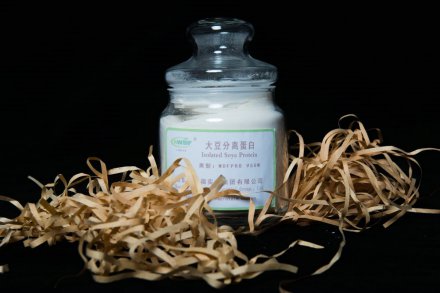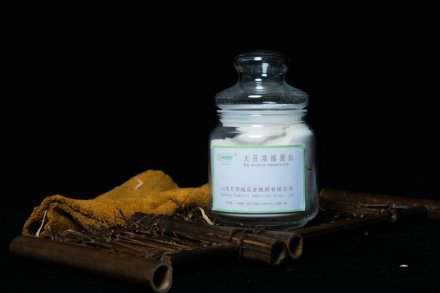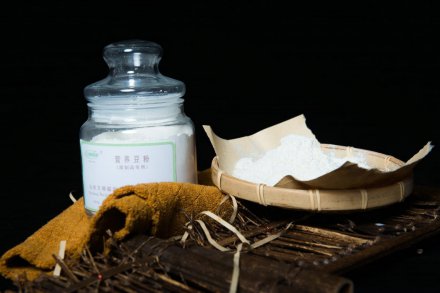2018-06-03 09:45:07
From Wikipedia, the free encyclopedia



Production methods
Edible soy protein "isolate" is derived from defatted soy flour with a high solubility in water (high NSI). The aqueous extraction is carried out at a pH below 9. The extract is clarified to remove the insoluble material and the supernatant liquid is acidified to a pH range of 4-5. The precipitated protein-curd is collected and separated from the whey by centrifuge. The curd is usually neutralized with alkali to form the sodium proteinate salt before drying.
Soy protein concentrate is produced by immobilizing the soy globulin proteins while allowing the soluble carbohydrates, soy whey proteins, and salts to be leached from the defatted flakes or flour. The protein is retained by one or more of several treatments: leaching with 20-80% aqueous alcohol/solvent, leaching with aqueous acids in the isoelectric zone of minimum protein solubility, pH 4-5; leaching with chilled water (which may involve calcium or magnesium cations), and leaching with hot water of heat-treated defatted soy meal/flour.
All of these processes result in a product that is 70% protein, 20% carbohydrates (2.7 to 5% crude fiber), 6% ash and about 1% oil, but the solubility may differ. One tonne of defatted soybean flakes will yield about 750 kg of soybean protein concentrate.
Product types
Processed soy protein appears in foods mainly in three forms: soy flour, soy protein isolates, and soy protein concentrates.
Isolates
Soy protein isolate is a highly refined or purified form of soy protein with a minimum protein content of 90% on a moisture-free basis. It is made from defatted soy flour which has had most of the nonprotein components, fats and carbohydrates removed. Because of this, it has a neutral flavor and will cause less flatulence than soy flours.
Soy isolates are mainly used to improve the texture of meat products, but are also used to increase protein content, to enhance moisture retention, and as an emulsifier.
Pure soy protein isolate is used mainly by the food industry. It is sometimes available in health stores or in the pharmacy section of the supermarket. It is usually found combined with other food ingredients.
Concentrates
Soy protein concentrate is about 70% soy protein and is basically defatted soy flour without the water-soluble carbohydrates. It is made by removing part of the carbohydrates (soluble sugars) from dehulled and defatted soybeans.
Soy protein concentrate retains most of the fiber of the original soybean. It is widely used as functional or nutritional ingredient in a wide variety of food products, mainly in baked foods, breakfast cereals, and in some meat products. Soy protein concentrate is used in meat and poultry products to increase water and fat retention and to improve nutritional values (more protein, less fat).
Soy protein concentrates are available in different forms: granules, flour and spray-dried. Because they are very digestible, they are well-suited for children, pregnant and lactating women, and the elderly. They are also used in pet foods, milk replacements for babies (human and livestock), and even used for some nonfood applications.
Flours
Soy flour is made by grinding soybeans into a fine powder. It comes in three forms: whole or full-fat (contains natural oils); defatted (oils removed) with 50% protein content and with either high water solubility or low water solubility; and lecithinated (lecithin added). A history of soy flour and grits has been published. As soy flour is gluten-free, yeast-raised breads made with soy flour are dense in texture.
Soy grits are similar to soy flour except the soybeans have been toasted and cracked into coarse pieces.
(Shandong Wonderful Bio-technology Co.,Ltd ,the soy protein expert, soy protein manufacturer of China)